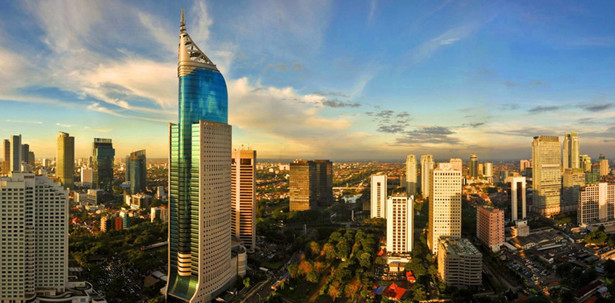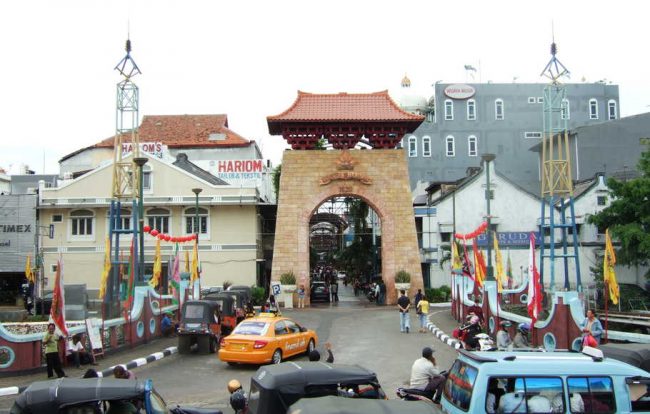The islands of the Indonesian archipelago stretch almost 5000km (3100mi) from the Asian mainland into the Pacific Ocean. Richly endowed with natural resources and hosting a phenomenal array of distinct cultures, for centuries they have been a magnet to Chinese and Indian traders, European colonisers, proselytising missionaries, wayward adventurers, mining companies, intrepid travellers and package tourists.
The islands are inhabited by 300 ethnic groups with distinct cultures, speaking 365 languages and dialects. Despite the national motto ‘unity in diversity’, these cultures are under threat from Indonesianisation as the islands are gradually unified under centralised Javanese rule. The multicultural concept of strength in difference has been a hard one to maintain in the face of such geographic and cultural fragmentation, and the Indonesian government has opted for democratic rule.
Facts at a Glance
Population: 250 million (2005 est.) with a growth rate of 1.45%, 2005 est. Life expectancy 69.57 (2005 est)
Area: 1,826,440 sq. km (about three times the size of Texas)
Geography: An archipelagic state of 17,000 islands, including some 6,000 occupied islands,
Capital: Jakarta, 8.8 million 2004 est.
Ethnic Groups: 490 ethnic groups, Javanese 45%, Sundanese 14%, Madurese 7.5%, coastal Malay 7.5%, others 26%.
Languages: Bahasa Indonesia, official modified form of Malay, and local dialects including 270 Austronesian languages and 180 Papuan. 13 languages have over one million speakers.
Literacy Rate: 87.9% (2005 est.)
Religion: approximately 87% Muslim.
GDP growth: 5.5 to 6% (2007 est.).
Per capita GDP ppp: $3,700 (2005 est.)
Unemployment rate: 11.8% (2005 est.)
Main exports: Oil, natural gas, appliances, textiles
Sources: U.S. Department of State, CIA World Fact Book, Economist Intelligence Unit, BBC News.
Indonesia is the world’s most populous Muslim nation and is the world’s fourth most populated nation overall. It has extensive natural resources. A large percentage of world trade transits the strategically important straits of Malacca which link the Indian Ocean littoral to the South China Sea and the larger Pacific Ocean basin. Indonesia is also perceived by many as the geopolitical center of the Association of Southeast Asian Nations (ASEAN), which is a key actor in the geopolitical dynamics of the larger Asia-Pacific region. Indonesia is still emerging from a period of authoritarian rule and is struggling to consolidate its status as one of the world’s largest democracies. Indonesia also represents a moderate form of Islam.
Environment
The Indonesian archipelago comprises more than 13,000 islands and shares borders with Malaysia and Papua New Guinea. Stretching like a backbone down the western coast of Sumatra is a line of active and extinct volcanoes. These continue through Java, Bali, Nusa Tenggara and then loop through the Banda Islands of Maluku to north-eastern Sulawesi. Under 10% of the total land area is suitable for farming, while two-thirds consists of woodland, forests and mangrove swamp (mostly found in Sumatra, Kalimantan, Sulawesi and Irian Jaya).
Indonesia’s rich natural environment encourages a diversity of flora and fauna. The archipelago is home to elephants, tigers, leopards and orang-utans. Sea turtles are found in the waters around Bali and the world’s largest flowers – Rafflesias – grow in Sumatra. The islands of Irian Jaya, Java, Kalimantan, Sulawesi and Sumatra have national parks, while other parks protect special areas such as Komodo, home to the Komodo dragon. Rainforests are disappearing at an alarming rate, especially in Kalimantan where the mighty dipterocarp forests are being logged ferociously for their durable tropical hardwoods.
Draped over the equator, Indonesia tends to have a fairly uniform climate – hot. It’s hot and wet during the wet season (October to April) and hot and dry during the dry season (May to September). Temperatures climb to about 31°C (88°F) in coastal regions, dropping further inland. The best time to visit Indonesia is from April to October.
History
It is generally believed that the earliest inhabitants of the Indonesian archipelago originated in India or Burma. In 1890, fossils of Java Man (homo erectus), some 500,000 years old, were found in east Java. Later migrants (`Malays’) came from southern China and Indochina, and they began populating the archipelago around 3000 BC. Powerful groups such as the Buddhist Srivijaya empire and the Hindu Mataram kingdom appeared in Java and Sumatra towards the end of the 7th century. The last important kingdom to remain Hindu was the Majapahit, which was founded in the 13th century. The subsequent spread of Islam into the archipelago in the 14th century forced the Majapahit’s to retreat to Bali in the 15th century.
By the 15th century, a strong Muslim empire had developed with its centre at Melaka (Malacca) on the Malay Peninsula. Its influence was shortlived and it fell to the Portuguese in 1511. The Dutch displaced the Portuguese and began making inroads into Indonesia. The Dutch East India Company based in Batavia (Jakarta) dominated the spice trade and took control of Java by the mid 18th century, when its power was already in decline. The Dutch took control in the early 19th century and by the early 20th century, the entire archipelago – including Aceh and Bali – was under their control.
Burgeoning nationalism combined with Japanese occupation of the archipelago during WW II served to weaken Dutch resolve and it finally transferred sovereignty to the new Indonesian republic in 1949. Achmed Sukarno, the foremost proponent of self-rule since the early 1920s, became President. In 1957, after a rudderless period of parliamentary democracy, Sukarno overthrew the parliament, declared martial law, and initiated a more authoritarian style of government, which he dubbed `Guided Democracy’. Sukarno’s usurpation of power drew immediate response: rebellions that broke out in Sumatra and Sulawesi were eventually crushed in 1958.
Sukarno’s consolidation of power did little to alleviate Indonesia’s economic woes. His corrosive vanity led to a number of grandiose building projects – little more than chimeras of national rebuilding – which provided sharp contrast to the poverty of his people. Instability reigned for several years as Sukarno launched Konfrontasi against Malaysia, withdrew from the United Nations, and planned to socialise the economy. Events came to a head in 1965 when an attempted coup, allegedly by Communist groups, killed several army generals and threatened Sukarno’s hold on power.
General Suharto, who was responsible for brutally quashing the coup, eventually seized presidential control. In stark contrast to the turbulent Sukarno years, Suharto sought to address Indonesia’s economic problems, forge national unity, promote openness, and curb its worst excesses. But the contentious invasion and annexation of East Timor in 1975, the 1991 Dili massacre in East Timor, the prevalence of cronyism and nepotism in government and business and persistent human rights abuses showed that many of those excesses were still running rampant.
In 1997 and ’98 Indonesia’s economy took a dramatic downturn – by January 1998 the rupiah had taken the title of ‘world’s worst performing currency’, 2.5 million people had lost their jobs and the International Monetary Fund was imposing austerity measures in return for sizeable loans. Many Indonesians believed the crisis was brought on by government nepotism, and a few brave souls suggested Suharto should quit his post.
The economic downturn coincided with a monsoon that never came and massive fires that destroyed millions of hectares of Indonesia’s forests. Sulawesi and Kalimantan burned, and virtually the whole archipelago was choked in thick smoke for weeks as airports closed, ships at sea collided and residents gasped for air. The fires were particularly cruel to Indonesia’s orang-utan population, as they wiped out vast reserves and killed an unknown number of those magnificent animals, putting the species in ever more danger of extinction in the wild.
In March 1998 the President decided to give himself another five years in office and appeared to become increasingly out of touch with the mood of the nation. Food shortages and price rises implemented under the IMF’s economic bailout package sparked anti-government demonstrations, which peaked in May 1998 after six students were shot dead by the army. More than 500 people died in Jakarta in the ensuing riots, and Suharto eventually stood down on 21 May. Attacks on Indonesia’s Chinese population were particularly fierce, and thousands of Chinese fled the country. In accordance with the Indonesia’s constitution, Suharto was replaced by his (none-too-popular) vice-president, Jusuf Habibie.
Habibie dabbled his toes in the waters of democracy with a half-hearted probe into Suharto’s comings and goings, a promise of economic reforms, and an announcement of independence or autonomy for the beleaguered East Timorese, but opposition forces and Indonesian students still bristled. In November 1998 the brewing tensions again boiled over into mass rioting and a series of bloody confrontations between soldiers and students. Sectarian violence (particularly intense on the islands of Ambon and Kalimantan) was thrown into the mix, with Muslims destroying churches and killing a number of Christians, while Dayaks and Madurese on Kalimantan turned on each other with horrific consequences.
East Timor’s stubborn refusal to accept anything less than full independence set a precedent for Indonesia’s other satellite states but the East Timorese payed for their beliefs. Anti-independent militia groups went on a trigger-happy rampage, massacring hundreds, after East Timor overwhelmingly voted, in September 1999, for independence. Habibie appeared paralysed by the events, the UN and East Timor’s Pacific neighbors were hamstrung by international protocol and the Indonesian army were tacitly supporting the militia groups. Extra police squads sent in to protect citizens were so passive they looked complicit.
The deadly gridlock was partially resolved by the deployment of Australian-led UN troops, who were ferried into East Timor to protect the citizens of the newly-formed East Timorese state. This was seen as high-handed western-style imperialism by Indonesian nationalists who resented Australia’s intervention in domestic affairs. This resentment, however, failed to translate into the all-out bloody reprisals against Australian troops that had been protected, despite some skirmishes at the West Timor border.
Things cooled down for a short while but then heated up again in October 1999 when Mr. Abdurrahman Wahid, a moderate Islamic leader, was elected as Indonesia’s first democratically elected President over the populist candidate, Mrs Megawati Sukarnoputri. Megawati supporters took to the streets armed with rocks and molotov cocktails, riot police were called in, bombs exploded and the country moved back to living on a knife-edge. Tensions between Indonesia and Australia remain high.
Economic Profile
The collapse of the rupiah has rendered much economic information obsolete. Things change daily, so check news services for the latest information.
Annual growth: -10%
Inflation: 40%
Major products/industries: Oil, gas, textiles, timber, coffee, rubber, coal, tin, copper, rice, pepper, palm oil
Major trading partners: Japan, USA, Singapore
Culture
Social and religious duty has, over time, been refined to form a code of behavior called adat or traditional law. Islam is the predominant religion of the archipelago but it’s somewhat tempered by elements of Hindu-Buddhism, adat and animism. In Java, especially, there are hundreds of places where spiritual energy is thought to be concentrated and can be absorbed by followers. Despite a lengthy colonial period, missionaries were only successful in converting small pockets of the Indonesian population to Christianity – the Bataks of Sumatra, the Toraks of Sulawesi and 95% of the population of Flores being notable examples.
Over 300 languages are spoken in the archipelago and most belong to the Malay-Polynesian group. Within this group, many regional languages and dialects are spoken. The lingua franca of the archipelago is Bahasa Indonesia, which is almost identical to Malay. It uses a number of foreign words, indicating the long history of contact Indonesia has had with other cultures. In recent years, Bahasa Indonesia has been appropriated by teenagers into a new and trendy vernacular called Bahasa Prokem; it has proved mostly unintelligible to the older generation.
Batik, the art of applying wax to cloth and then tie-dying in colourful and dramatic designs, is produced throughout Indonesia, and the centre of this activity is Yogyakarta in Java. Other craft forms include: ikat, which is a type of weaving with tie-dyed threads; songket, a silk cloth with gold or silver threads woven into it; and kris, artwork often decorated with jewels. Javanese wayang (puppet) plays and gamelan (hypnotic music composed mostly of percussive instruments) are also popular artistic forms.
Many Indonesian dishes are Chinese-influenced, but some, such as Padang food from Sumatra, are distinctly home-grown. Wherever you travel in Indonesia you’ll see vendors selling snacks such as potatoes, sweet nuts, biscuits or fruit. Rice is the basis of each meal, eaten as a soup or with an assortment of hot and spicy side dishes, salad and pickles. Nasi goreng (fried rice) is the most common dish, while sate (skewered meats with a spicy peanut sauce), gado-gado (bean sprouts and vegies in peanut sauce) and seafood are also popular. The variety of tropical fruits grown would make a greengrocer swoon. They include custard apples, durians, guavas, jackfruits, mangoes, papayas, starfruits and rambutans.
Events
With such a multiplicity of ethnic groups, Indonesia has, unsurprisingly, a surfeit of cultural events throughout the year. On Sumba, mock battles that hark back to the era of internecine warfare are held in February and March. The day before Balinese Caka New Year (March-April) temple icons are taken to the sea to be bathed and drummers drive evil spirits back to the spirit world. During the Balinese festival of Galungan (moving dates) even the gods descend to earth and join in the revelry. There’s a dramatic Easter Parade on the island of Larantuka, whip duels in Ruteng, Flores in August and Torajan funereal feasts are held in central Sulawesi, mainly between August and October. As most Indonesians are Muslim, many festivals are affected by the lunar calendar; dates are subsequently pushed back 10 or 11 days each year.
Facts for the Traveler
Visas: 30 day Visa on arrival for many countries. Check here >>
Health risks: Dengue fever, giardiasis, hepatitis, Japanese encephalitis, malaria, paratyphoid, rabies, typhoid
Time: There are three time zones: Sumatra, Java and West & Central Kalimantan are seven hours ahead of UTC; Bali, Nusa Tenggara, South & East Kalimantan and Sulawesi are eight hours ahead of UTC; and Irian Jaya and Maluku are nine hours ahead of UTC
Electricity: 220V, 50 Hz
Weights & Measures: Metric (see the conversion table.)
Tourism: 4 million visitors per year
Money & Costs
Currency: Rupiah (rp)
Relative costs: Things are in flux because of Indonesia’s economic meltdown and the imposition of IMF economic reforms. Any list of relative costs would be no more than a wild guess, but rest assured that if you have US dollars they’ll go a long way.
Travellers cheques and cash (preferably US dollars) are the way to go in Indonesia. Credit cards are accepted by expensive hotels, restaurants and shops, but not for day-to-day expenses. In major centers, you can always find a bank that will advance cash on Visa or MasterCard. Credit card advances through ATMs are possible, but limited.
Tipping is not a normal practice in Indonesia but is often expected for special service. Someone who carries your bag or guides you around a tourist attraction will expect a tip. Jakarta taxi drivers expect you to round the fare up to the next Rp 5000. Hotel porters expect a Rp 50,000 per bag.
Many everyday purchases normally require bargaining but in the current economic turmoil you’d do well to look to your conscience before applying this too stringently. Tourism has taken a severe downturn in most parts of the archipelago and, despite price hikes, hotel rooms are liable to be discounted.
When to Go
Though travel in the wet season is possible in most parts of Indonesia, it can be a deterrent to some activities and travel on mud-clogged roads in less developed areas is difficult. In general, the best time to visit is in the dry season between May and October.
The Christmas holiday period beings a wave of migratory Australians and there’s an even bigger tourist wave during the European summer holidays. The main Indonesian holiday period is the end of Ramadan, when some resorts are packed to overflowing and prices skyrocket.





